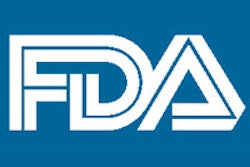Cancer Care Ontario has joined several professional societies in the U.S. in recommending annual lung cancer screening with low-dose CT (LDCT) for high-risk populations, according to a new report in the Journal of Thoracic Oncology.
Following a systematic review of eight randomized, controlled trials and 13 single-center studies evaluating lung cancer screening with low-dose CT, the group concluded that "the benefits of screening high-risk populations for lung cancer with LDCT outweigh the harms if screening is implemented in a strictly controlled manner" (JTO, September 3, 2013).
The guideline was developed using the methods of Cancer Care Ontario's Program in Evidence-Based Care, and it was based on an analysis recently completed by the American Cancer Society, the American College of Chest Physicians, the American Society of Clinical Oncology, and the National Comprehensive Cancer Network, wrote Dr. Heidi Roberts, Dr. Kazuhiro Yasufuku, and colleagues.
In its report, the group cited the results of the National Lung Screening Trial, which showed a large mortality reduction in patients who were screened with low-dose CT versus a group that underwent chest radiography. The guideline supports the screening of individuals at high risk for lung cancer and includes advice for determining what constitutes a positive result on LDCT. It also covers follow-up protocols and optimal screening intervals.
Key recommendations include the following:
- Low-dose CT lung cancer screening is recommended for individuals 55 to 74 years of age with a minimum smoking history of at least 30 pack-years.
- An MDCT scanner should be used with settings of 120 kVp to 140 kVp and 20 mAs to 60 mAs, with an average effective radiation dose of 1.5 mSv or less.
- A nodule 5 mm or larger indicates a positive result and warrants a three-month follow-up with CT; nodules 15 mm or larger should undergo immediate diagnostic procedures to rule out malignancy.
- After the initial scan, screening should be conducted annually for two consecutive years, then once every two years after each negative scan.




















